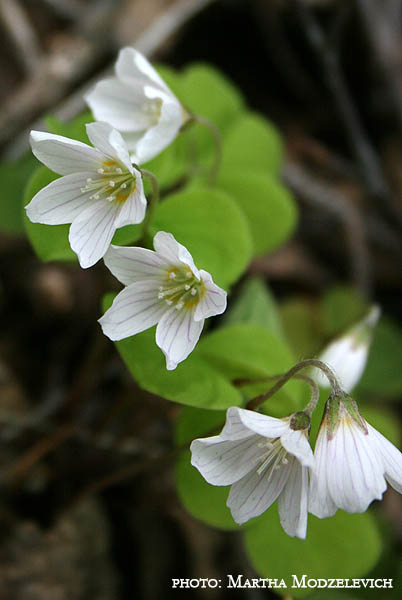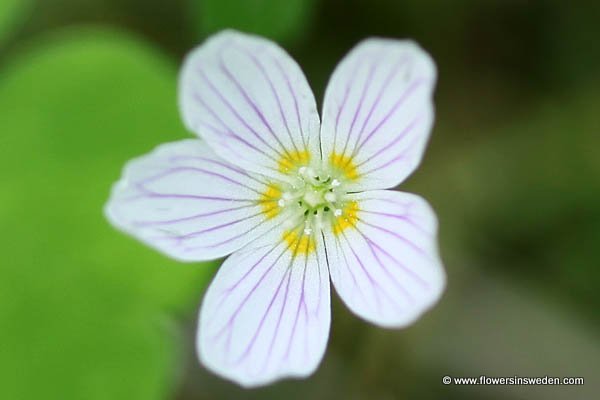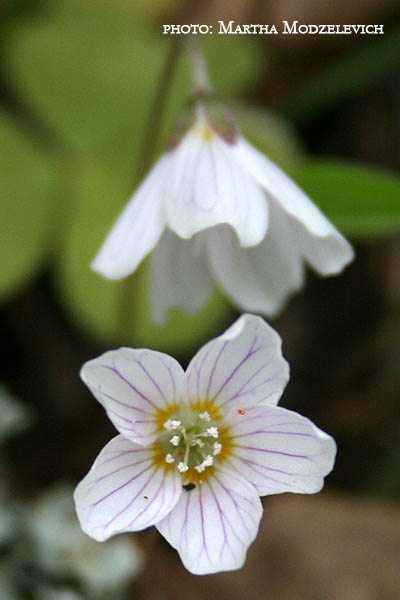|
|
| Life form: |
| Rhizome geophytes |
| Stems: |
| Underground creeping stem, lacking a permanent woody stem, no aerial stem |
| Leaves: |
| Heart-shaped leaves folded through the middle, in groups of three leaves atop a hairy, reddish brown stalk; three-nerved, the leaf-stalks not winged |
| Flowers: |
| Thin white petals with red veins |
| Flowering Period: |
| May, June |
| Fruits: |
| Capsule divided into five chambers, with two black, smooth seeds in each chamber; When the capsule is mature it is stretched, and this causes it to split open and eject the seeds, by a catapult motion, to some distance. |
| Habitat: |
| All types of woodlands |

Derivation of the botanical name:
Oxalis, Greek oxys, acid, sour, sharp; referring to the taste of the leaves and the stem; Pliny used Latin oxalis, idis, for some species of Rumex.
Acetosella, Latin acetosus, acid, sour, refers to the leaves sour taste; a pre Linnaean name for common sorrel and other plants with acid leaves.
- The standard author abbreviation L. is used to indicate Carl Linnaeus (1707 – 1778), a Swedish botanist, physician, and zoologist, the father of modern taxonomy.

|



